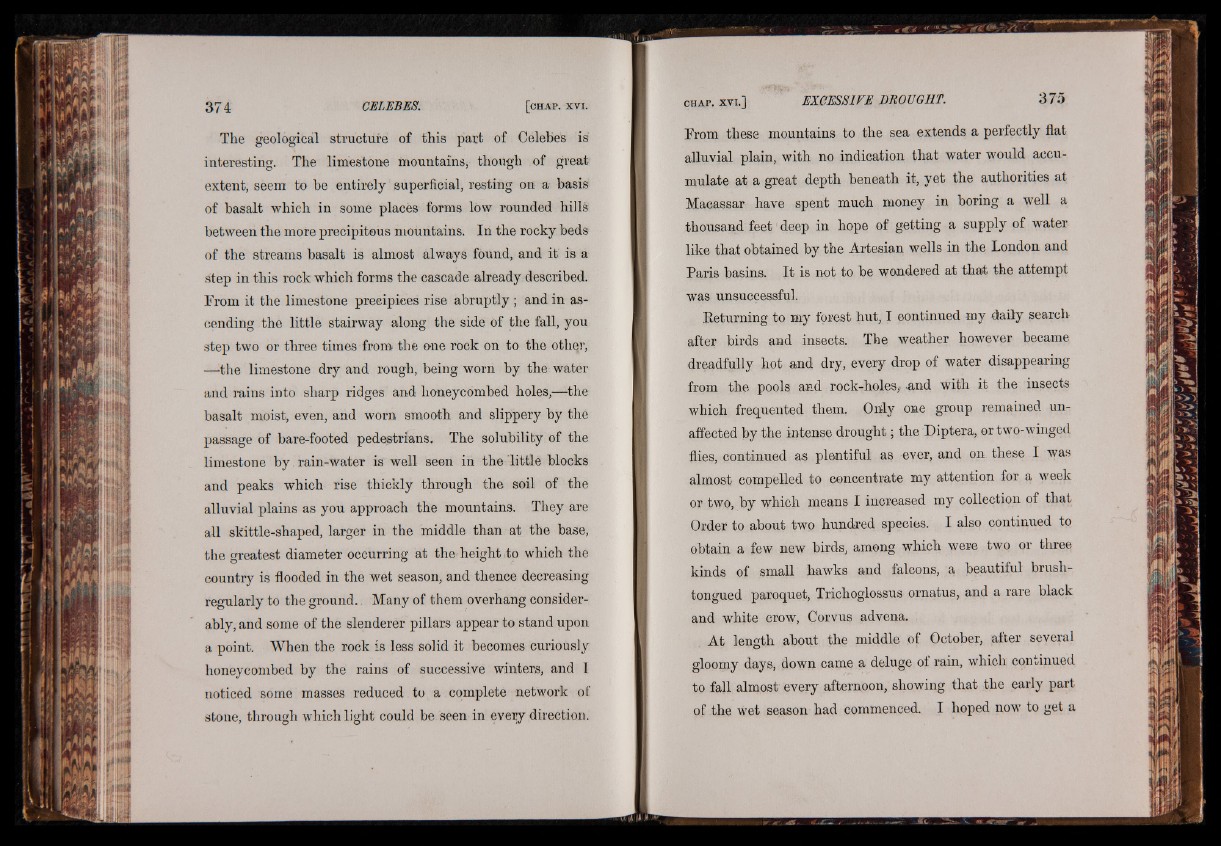
The geological structure of this part of Celebes is
interesting. The limestone mountains, though of great
extent, seem to be entirely superficial, resting on a basis
of basalt which in some places forms low rounded hills
between the more precipitous mountains. In the rocky beds
of the streams basalt is almost always found, and it is a
step in this rock which forms the cascade already described.
From it the limestone precipices rise abruptly ; and in ascending
the little stairway along the side of the fall, you
step two or three times from the one rock on to the other,
—-the limestone dry and rough, being worn by the water
and rains into sharp ridges and honeycombed holes,—the
basalt moist, even, and worn smooth and slippery by the
passage of bare-footed pedestrians. The solubility of the
limestone b y . rain-water is well seen in the little blocks
and peaks which rise thickly through the soil of the
alluvial plains as you approach the mountains. They are
all skittle-shaped, larger in the middle than at the base,
the greatest diameter occurring at the height to which the
country is flooded in the wet season, and thence decreasing
regularly to the ground.. Many of them overhang considerably,
and some of the slenderer pillars appear to stand upon
a point. When the rock is less solid it becomes curiously
honeycombed by the rains of successive winters, and I
noticed some masses reduced to a complete network of
stone, through which light could be seen in eveiy direction.
From these mountains to the sea extends a perfectly flat
alluvial plain, with no indication that water would accumulate
at a great depth beneath it, yet the authorities at
Macassar have spent much money in boring a well a
thousand feet deep in hope of getting a supply of water
like that obtained by the Artesian wells in the London and
Paris basins. It is not to be wondered at that the attempt
was unsuccessful.
Pp.turning to my forest hut, I continued my daily search
after birds and insects. The weather however became
dreadfully hot and dry, every drop of water disappearing
from the pools and rock-holes, and with it the insects
which frequented them. Only one group remained unaffected
by the intense drought; the Diptera, or two-winged
flies, continued as plentiful as ever, and on these I was
almost compelled to concentrate my attention for a week
or two, by which means I increased my collection of that
Order to about two hundred species. I also continued to
obtain a few new birds, among which were two or three
kinds of small hawks and falcons, a beautiful brush-
tongued paroquet, Trichoglossus ornatus, and a rare black
and white crow, Gorvus advena.
At length about the middle of October, after several
gloomy days, down came a deluge of rain, which continued
to fall almost every afternoon, showing that the early part
of the wet season had commenced. I hoped now to get a